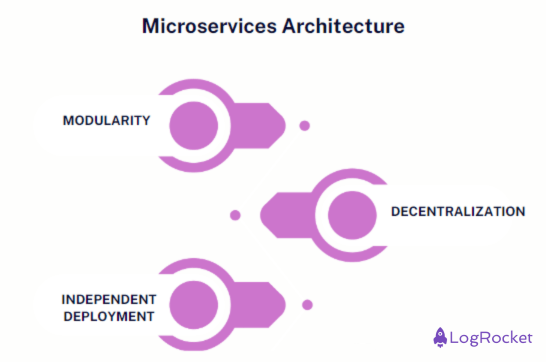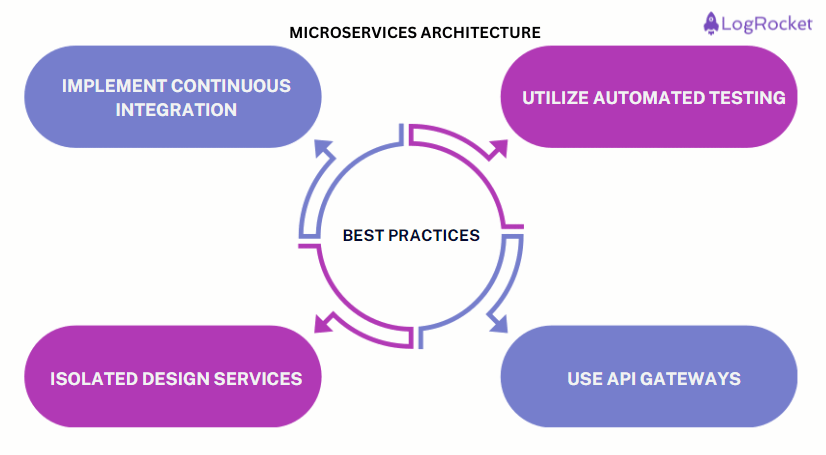
Microservices architecture has become a popular approach in software development for its greater flexibility and scalability compared to traditional monolithic architectures. This approach involves breaking down large applications into smaller, independent services that communicate and work together.
While microservices offer numerous benefits, they also come with shortcomings. These shortcomings, though, provide a great learning opportunity for product managers.
In this blog, I’ll discuss the key aspects of product management in a microservices environment, covering the challenges, best practices, team coordination, and performance monitoring necessary to succeed.
Understanding microservices architecture
Microservices architecture is a distinctive approach to software development.
Unlike monolithic architecture, where an application is built as one interconnected unit, microservices break it down into small, independent services that communicate via APIs. This modular structure allows each component to be developed, deployed, and scaled independently.

The key characteristics of the microservices architecture approach include:
- Modularity — Microservices are modular; this allows for independent updates and scaling of services
- Decentralization — Each microservice can use different technologies and databases; this promotes flexibility
- Independent deployment — Microservices can be deployed independently; this reduces the risk of affecting the entire system when changes are made
Microservices architecture offers greater agility and scalability. But it also requires careful management of inter-service communication and dependencies. I’ll talk about the challenges involved next.
Challenges in managing microservices
While the distributed nature of microservices provides flexibility and scalability, it also introduces complexities that differ greatly from traditional monolithic systems. And so, product managers need to gain a deeper understanding of this approach.
I’ll list out the main challenges to managing microservices architecture:
- Managing a large number of independent services requires sophisticated orchestration and coordination to ensure smooth operation \
- As the systems scale, inter-service communication can become complex and unpredictable \
- Maintaining data consistency across services can be difficult, as each may use different databases, which leads to specific challenges
These challenges necessitate a proactive approach to management. Product managers have to apply robust monitoring and comprehensive documentation to keep the gears running smoothly.
Employing microservices development
I’ve said it before — developing and maintaining microservices architecture is challenging, even for the most experienced teams. These challenges arise due to the independent nature of each service.
Use development best practices
It is ideal to follow a set of best practices to ensure efficiency, reliability, and scalability:
- CI/CD pipelines — Implement continuous integration and continuous deployment (CI/CD) pipelines to automate testing and deployment processes
- Automated testing — Utilize automated testing frameworks to ensure each service functions correctly and integrates well with others
- Service isolation — Design services to be isolated and independent, allowing for individual scaling and updates without affecting other services
- API gateways — Use API gateways to manage and secure inter-service communication
- Robust monitoring — Implement strong logging, monitoring, and alerting mechanisms to gain insights into service performance
Adopt and modify these best practices based on your team’s workflows. This will help you streamline the development and maintenance of microservices and reduce the risks associated with their inherent complexity.

Coordinate across cross-functional teams
Microservices environment demands effective coordination among all teams. All development, QA, and operations teams must align with the set objectives and work in close coordination.
To this end, product managers need to promote an environment of open communication and collaboration — regular cross-team meetings and documentation help align efforts.
A newer approach to improving team coordination is DevOps, which integrates development and operations workflows. The shared responsibility model promotes a unified approach to software development and deployment.
Automated testing and CI/CD pipelines, as I said before, help streamline processes. They allow teams to work efficiently while maintaining consistent quality across services.
Monitor and employ performance management
Microservices architecture relies heavily on monitoring and performance management because they ensure the system’s reliability and efficiency. Moreover, when multiple independent services interact with one another, monitoring strategy becomes even more important.
I’ll share a few specific techniques that can aid the process:
- Distributed tracing — Track requests across different services to understand how they interact
- Log aggregation — Use tools to collect and analyze logs from all services
- Key metrics monitoring — Monitor response times, error rates, and throughput to track performance
- Health checks — Continuously verify the operational status of services through regular health checks
- Alerting systems — Set up alerting systems to notify teams of performance issues or failures
Effective monitoring also supports proactive maintenance and optimization. This way, your teams can proactively address potential problems before they impact the system.
Key takeaways
The management of a microservices architecture requires a strategic approach. So, as a PM, you must strategize to address its unique challenges and leverage its benefits.
Develop an understanding of the architecture, overcome management challenges, employ best development practices, coordinate cross-functionally across your teams, and monitor consistently.